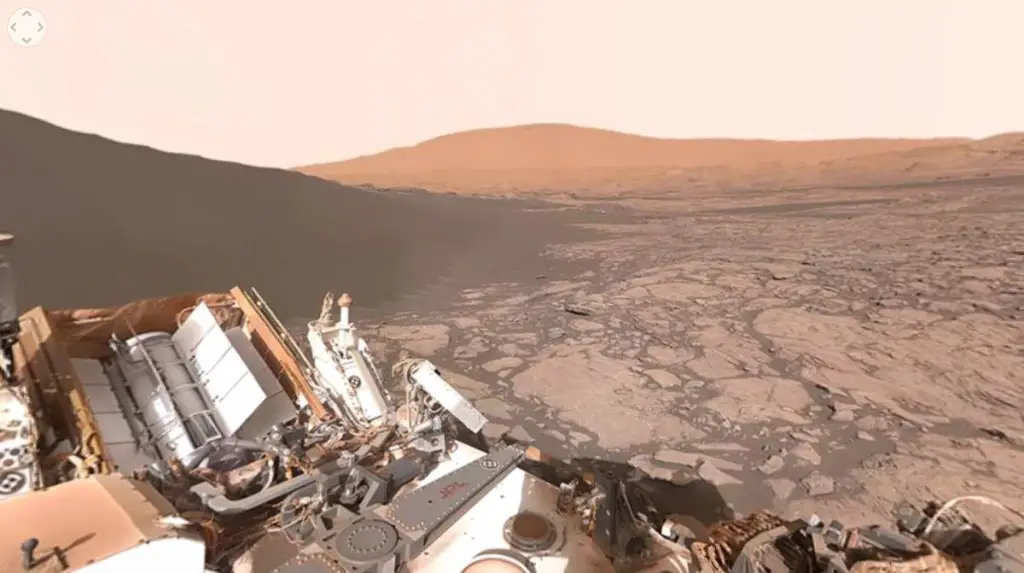NASA Jet Propulsion Laboratory (JPL) has published the official video of Perseverance Rover‘s first 360-degree view of Mars, and it’s amazing!
The video above shows the first 360-degree view of the landing site (the Jezero Crater, see notes 1) of NASA’s Perseverance rover on Mars, as captured by the rover’s color Navigation Cameras, or Navcams. The Navcams are on the remote sensing mast (or “head”) of the rover. Perseverance possesses the most cameras of any Mars rover to date, with 19 on the rover.
Perseverance landed on Mars’ Jezero Crater on February 18, 2021. These images were obtained on February 20, 2021.
Scientists think that the Jezero Crater and surrounding area were once flooded with water and were home to an ancient river delta. More than 3.5 billion years ago, river channels spilled over the crater wall and created a lake. Scientists see evidence that water carried clay minerals from the surrounding area into the crater lake.
Conceivably, microbial life could have lived in the Jezero Crater during one or more of these wet times. If so, signs of their remains might be found in lakebed or shoreline sediments. Scientists will study how the region formed and evolved, seek signs of past life, and collect samples of Mars rock and soil that might preserve these signs.
A key objective for Perseverance’s mission on Mars is astrobiology, including the search for signs of ancient microbial life. The rover will characterize the planet’s geology and past climate, paving the way for human exploration of the Red Planet, and be the first mission to collect and cache Martian rock and regolith.

Notes
- Jezero is a crater on Mars that has a diameter of about 45.0 km (28.0 mi). It is thought to have once been flooded with water billions of years ago. It is also believed that the lake was long-lived, so life may have developed in the crater. From the orbit, Clay minerals have been detected in and around the crater. Clays form in the presence of water, so this area probably once held water and maybe even life. That’s why the Jezero crater was chosen as the landing site of the Perseverance rover, it may contain the clues of the potential life on Mars in the distant past. The crater once considered a landing site for the Mars Science Laboratory, the robotic space probe mission to Mars launched by NASA on November 26, 2011, which successfully landed Curiosity Mars rover in Gale Crater on August 6, 2012.
Sources
- Mars 2020 Perseverance Rover on the NASA website
- Mars 2020 Perseverance Rover mission page on the NASA Jet Propulsion Laboratory (JPL) website
- Jezero crater on Wikipedia
- Moon Landings: All-Time List [1966-2025] - February 2, 2025
- What Is Max-Q and Why Is It Important During Rocket Launches? - January 16, 2025
- Top 10 Tallest Rockets Ever Launched [2025 Update] - January 16, 2025


